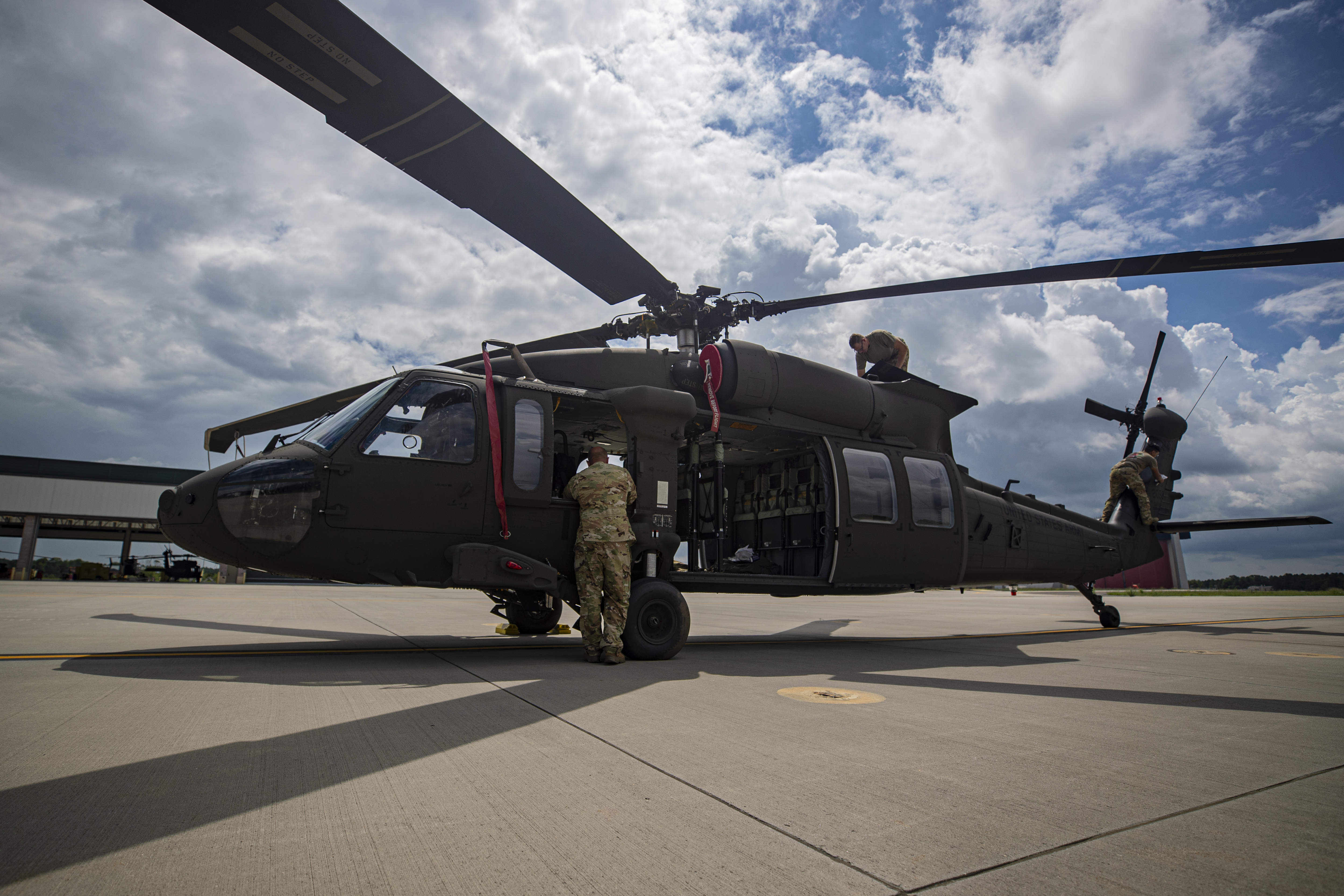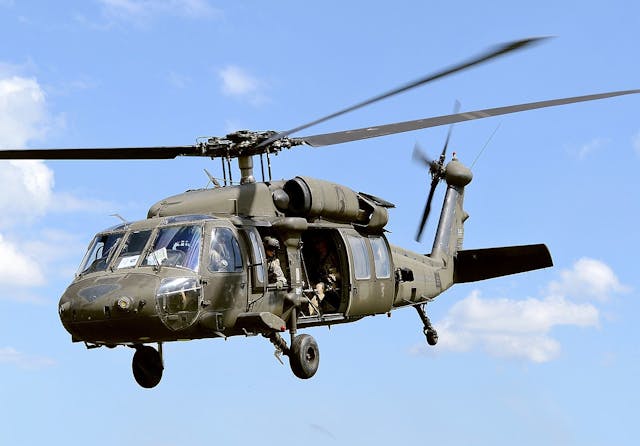The Function of UH 60 in Modern Military Operations
The Function of UH 60 in Modern Military Operations
Blog Article
Checking Out the Ingenious Technology Behind Airplane Style and Engineering
The field of airplane style and design is witnessing a transformative shift driven by innovative technologies that boost efficiency, sustainability, and effectiveness. Advanced products such as carbon fiber composites and titanium alloys are establishing new criteria, while wind resistant innovations and expert system are streamlining procedures and improving end results. As the industry faces the challenges of ecological responsibility, developments in sustainable aviation modern technologies guarantee to improve the future. Nevertheless, the effects of these developments expand beyond efficiency metrics; they may redefine the actual nature of air traveling. What might this indicate for the sector overall?
Advanced Materials in Airplane Style
Exactly how can the assimilation of sophisticated products revolutionize aircraft layout? The incorporation of advanced materials, such as carbon fiber composites, titanium alloys, and advanced porcelains, plays a critical role in enhancing aircraft performance and effectiveness. These materials offer remarkable strength-to-weight proportions, allowing makers to lower total airplane weight without compromising structural integrity. This reduction in weight directly contributes to boosted gas performance and raised haul ability.
Additionally, advanced materials show boosted resistance to deterioration and tiredness, leading to lower maintenance prices and prolonged life span. The use of titanium in critical parts assists endure extreme temperature levels and anxieties, while carbon fiber compounds provide flexibility in design and production procedures. This versatility enables even more wind resistant forms, adding to superior performance characteristics.
Furthermore, the combination of wise materials, which can alter homes in reaction to exterior stimuli, opens up brand-new methods for flexible systems in aircraft design. uh 60. These technologies assure not only to enhance safety and operational performance however also to add to sustainability initiatives by reducing environmental impact with reduced discharges. In recap, advanced materials are redefining the landscape of aircraft style, leading the way for much more reliable, resilient, and eco-friendly air travel remedies
Aerodynamic Innovations for Effectiveness
Aerodynamic innovations play a crucial role in boosting aircraft performance, substantially affecting fuel consumption and general efficiency. Developments in airfoil layout, such as the intro of supercritical wings, permit maximized lift-to-drag ratios, lowering drag at transonic rates. These technologies allow aircraft to preserve higher rates with lower gas expense, directly affecting functional prices and environmental sustainability.
In addition, the combination of winglets has proven reliable in reducing vortex-induced drag at the pointers of wings, further improving gas performance - uh 60. This design adjustment brings about a reduction in wake turbulence, adding to improved aerodynamic efficiency during cruise ship conditions

Moreover, computational liquid characteristics (CFD) tools have revolutionized the testing and refinement of aerodynamic forms, allowing for specific simulations of air flow around airplane (uh 60). This allows designers to innovate continually, guaranteeing that modern-day aircraft not just meet governing standards however also push the borders of effectiveness in air travel

Role of Computer Simulations
Computer simulations have ended up being an indispensable tool in the field of aircraft design, enabling engineers to conduct detailed analyses and optimizations go now of different layout aspects. These simulations enable for the digital screening of wind resistant properties, structural honesty, and efficiency metrics long before physical prototypes are developed. By using computational fluid characteristics (CFD) and finite component analysis (FEA), engineers can predict exactly how air streams around the aircraft and exactly how various products will certainly respond to stress and anxiety and stress.
In addition, computer simulations promote the exploration of a wide variety of variables and situations, increasing the layout process and reducing expenses connected with physical screening. This ability not only boosts the accuracy of predictions concerning aircraft behavior but likewise offers insights into potential design improvements that might not be right away evident with standard approaches.

In addition, simulations aid make certain conformity with rigorous safety and security laws by enabling engineers to recognize and remedy possible concerns early in the style stage. The combination of simulation technologies right into the aircraft layout process highlights the substantial advancements in design methods, eventually contributing to the development of more secure, extra reliable, and eco-friendly aircraft.
Expert System in Design
Expert system (AI) is revolutionizing the design landscape, specifically in aircraft style, by enhancing and boosting decision-making processes design process. Via device understanding formulas, AI can assess vast datasets, uncovering patterns and insights that notify layout selections and improve overall effectiveness.
AI applications in aircraft style consist of generative style, where algorithms produce several style options based upon defined criteria, permitting designers have a peek here to evaluate a broader range of possibilities. This not only speeds up the style phase however also makes certain that the end products satisfy strict efficiency and safety standards.
Furthermore, AI-driven anticipating analytics facilitate upkeep scheduling by examining historical data and anticipating potential failings. This positive approach decreases downtime and boosts aircraft dependability.
In addition, AI aids in simulation and modeling, allowing engineers to evaluate designs under various problems without the demand for physical prototypes. This capability shortens growth timelines and decreases expenses related to typical testing approaches.
Sustainable Aviation Technologies
The solution lies in the fostering of sustainable aeronautics innovations that prioritize effectiveness and reduce carbon discharges. Innovations such as lasting aviation gas (SAFs), which are derived from sustainable sources, have arised as a crucial part in achieving reduced lifecycle emissions.
Furthermore, innovations in aircraft style, such as the growth of lighter materials and even more aerodynamically efficient shapes, add to improved fuel performance. Electric and hybrid propulsion systems are also acquiring grip, offering a pathway to lower reliance on fossil fuels and decrease greenhouse gas emissions.
The combination of these modern technologies is supported by regulatory structures and sector collaborations aimed at establishing enthusiastic sustainability targets. Digital devices like data analytics and synthetic knowledge can maximize trip operations, further boosting fuel performance. By welcoming sustainable techniques and technologies, the air travel market can not just fulfill the expanding need for flight yet additionally play a pivotal role in dealing with climate modification, making sure a much more lasting future for air transport.
Verdict
The merging of innovative materials, wind resistant advancements, and innovative innovations notes a substantial development in aircraft layout and engineering. The assimilation of carbon fiber composites, titanium alloys, and AI-driven processes not only enhances efficiency and performance yet likewise simplifies workflows and anticipating upkeep.

Computer system simulations have actually ended up being an indispensable device in the area of aircraft layout, enabling designers to perform detailed analyses and optimizations of different style aspects.The convergence of advanced materials, aerodynamic developments, and innovative modern technologies notes a substantial advancement in airplane layout and design.
Report this page